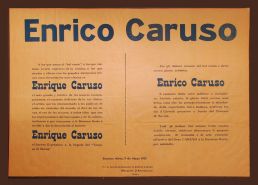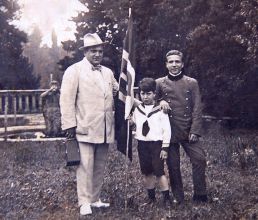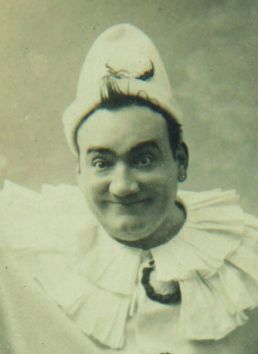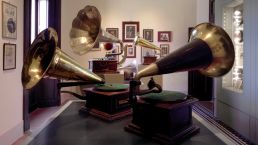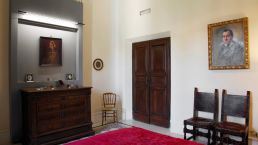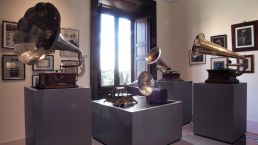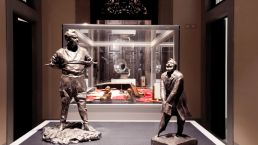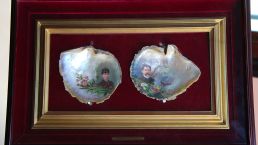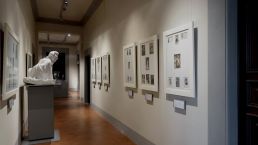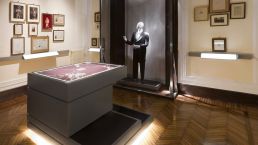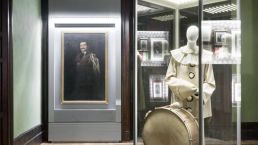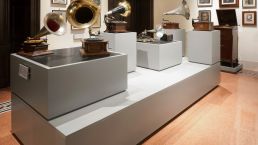Enrico Caruso Museum
The first Italian museum dedicated to Enrico Caruso
Dealing with the design of the first Italian museum dedicated to Enrico Caruso was a complex and intriguing challenge. Also starting from the place – in this case the building – that would have housed the museum. The stimulus and suggestions that each context could offer were amplified by the fact that Villa Bellosguardo had once been the favorite residence of the great tenor. Right here, in this corner of Tuscany, in 1906 he saw the future he had always imagined for himself: Villa Bellosguardo would have been his small private palace where one day he could enjoy the golden retreat from the scenes with his children and his beloved companion. Despite that dream soon shattered, the singer continued to dedicate constant care to the estate, continuing the initial restoration and enhancement projects.
During the long construction period, which lasted over seven years, Caruso delighted to compose the furnishing of every single part of the property and collected an immense treasure to be kept in the majestic house, with works of art commissioned from the most important contemporary artists, but also furniture, collections of antique watches and precious objects, paintings and precious fabrics.
Unfortunately the memory and splendor conceived by Enrico has remained only the memory, entrusted to faded old images. Combined with the desire to redeem the fortunes of that unadorned, yet delicate and suggestive architectural envelope.
The museum project conceived for the Enrico Caruso Museum at Villa Bellosguardo is based on the idea of giving the visitor a direct encounter with the artist. Going through the rooms of his house he learns the story. Enhancing and amplifying the peculiarities already inherent in the place, the memorabilia and documents are presented through traditional media and with the aid of interactive multimedia technologies, and are harmonized within the museum itinerary. Deliberately every technological apparatus is hidden from the eye of the visitor who can thus concentrate on the exhibits on display and the spatiality of the rooms. The aim is to create an emotional bridge between the guest and the great Caruso, favoring the establishment of an exchange based on a fruitive and emotional interaction mode. Starting from the idea that a museum today should not only preserve and show memorabilia, but rather be able to bring the visitor to an attitude of active and conscious use of places for art.
With a free and fluid movement, the guest walks through the large rooms dedicated to permanent exhibition. From the entrance, climbing the stone staircase, one can hear his voice, an echo revealing a never forgotten presence. And it begins a journey of intense atmospheres in which the great Caruso is evoked by numerous and different elements: the objects that belonged to him, the works collected, the drawings he made, the numerous awards, the images that represent him in the world and his same voice delivered to us on the historic vinyl and today the protagonist of a unique interaction experience in the Music Room. Overlooking the garden, flooded with light, this great room was the heart of Enrico Caruso’s artistic intimacy: the room of his music. Therefore it contains the only sound place of the Museum. Here the voice of Caruso shows itself as a changing, moving, changing soundscape. The visitor enters and begins to explore the Hall. If the guest is far from the exhibited exhibits or if he does not dwell, he perceives an indistinct buzz, actually constituted by so many opera arias sung by Caruso, but in a whisper. The visitor does not realize this, as long as he does not face an artifact. Here, the whisper is transformed into the full voice of Caruso, in an original vintage engraving, combined with that particular exhibit. This song lasts only a few moments, because it must give way to another “gush” of voice, caused by another visitor or by the same, when he moves, in front of another find and another piece. The position of the visitor in the space is signaled by the monitor placed on the wall, which reveals the title of the piece of music that is heard at that moment.
In the center of the room, isolated from all the rest, on a transparent pedestal, stands a charming old phonograph. It is with a device similar to this that America heard, for the first time, the voice of Enrico Caruso in the ten songs recorded for Victor in New York. A little hidden, on the back of the pedestal, there is a crank available to the visitor. It can operate it, exactly as it would with that incorporated in the gramophone, which charges the spring. This crank is aesthetically similar to the original, but is actually a mechanical interface with the system. If the guest decides to rotate it all other interactions are suspended, and throughout the room an original engraving by Caruso is heard, in full, as long as the crank rotates; if it stops, the song is no longer audible, but continues silently, to be evoked again when the crank starts rotating again; as long as the visitor does not leave the phonographic area.
